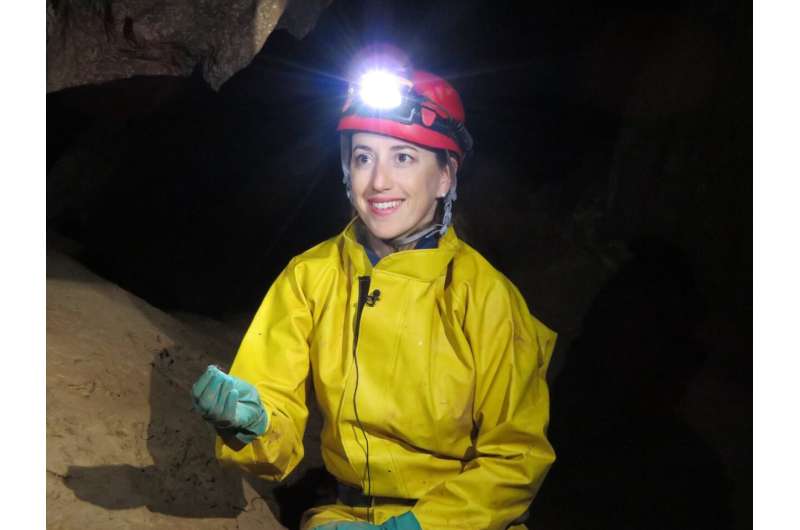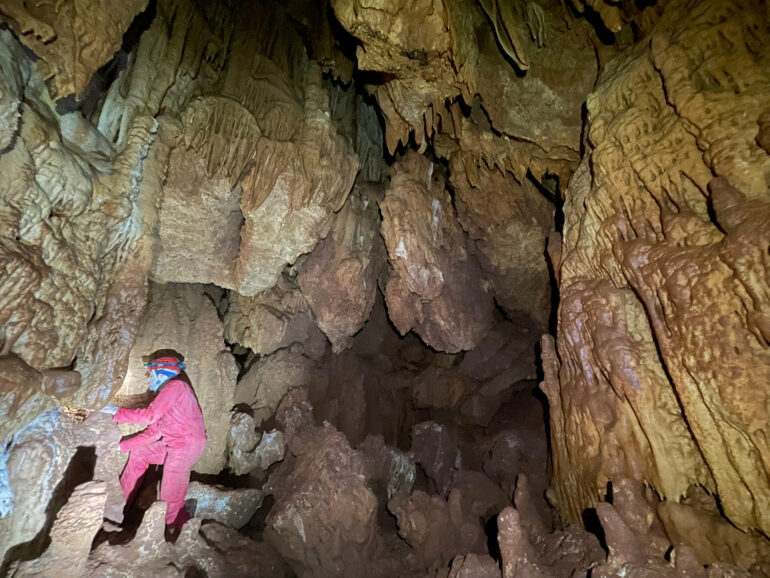An international study of temperature variations in 12 caves around the world shows that a large part of the Earth’s freshwater reserves available for immediate consumption can be at risk due to climate change.
Caves allow scientists to observe the underground systems that are distributed throughout the planet—systems that—in their vast majority—are inaccessible to human beings. These ecosystems are home to the largest reserves of freshwater available for immediate human consumption and are inhabited by unique and highly adapted organisms, which guarantee the quality of these strategic reserves for the future of humanity by recycling organic matter and contaminants.
In this study, recently published in Scientific Reports, the international research team analyzed over 105,000 temperature measurements in caves located in different climatic areas and compared them with the corresponding surface temperature.
“The temperature variations revealed three distinct patterns of thermal response of the underground environment in comparison to the surface, which is new,” says Ana Sofia Reboleira, coordinator of this study, biologist at the Centre for Ecology, Evolution and Environmental Changes—cE3c, at the Faculty of Sciences of the University of Lisbon (Portugal).

Ana Sofia Reboleira, coordinator of this study, biologist at the Centre for Ecology, Evolution and Environmental Changes—cE3c, at the Faculty of Sciences of the University of Lisbon (Portugal). © Rosa Pereira
All the annual variations of temperature registered in caves were small—between 0.1ºC, the smallest, and 8.8ºC, the largest. But while in some cases the cave temperatures reflected the surface temperature with a slight delay, in others the surface variations were rapidly reflected in the underground. There were also some cases in which there was an inverse pattern: the higher the temperature at the surface, the lower in the cave (and vice-versa), as in a thermal mirror.
“Our results demonstrate that the average temperature in caves reflects the average temperature outside. The consequence is that the rise in temperature predicted in the context of climate change at the surface will be reflected in the underground,” explains Reboleira.
Caves are inhabited by communities of rare and unprotected species, which guarantee water quality and are adapted to living in very stable environments, with minimal temperature variations. Thus, “the consequences of the increase in temperature are absolutely unpredictable and certainly harmful to the quality of the largest reserves of fresh water available for immediate consumption,” warns the researcher.
This study also reveals the existence of daily thermal cycles in some caves. In ecosystems with a total absence of sunlight, organisms lack circadian rhythms. “This surprising discovery shows that these daily thermal cycles can potentially control the biological rhythms in subterranean organisms,” explains Reboleira.
Several of the caves studied as part of this study are global hotspots of underground biodiversity—such as Planina, in Slovenia; Viento, in the Canaries; and Vale Telheiro, located in Portugal.
More information:
Maria J. Medina et al, Temperature variation in caves and its significance for subterranean ecosystems, Scientific Reports (2023). DOI: 10.1038/s41598-023-48014-7. www.nature.com/articles/s41598-023-48014-7
Provided by
University of Lisbon
Citation:
Climate change can put the planet’s largest reserves of drinking water at risk (2024, January 25)



